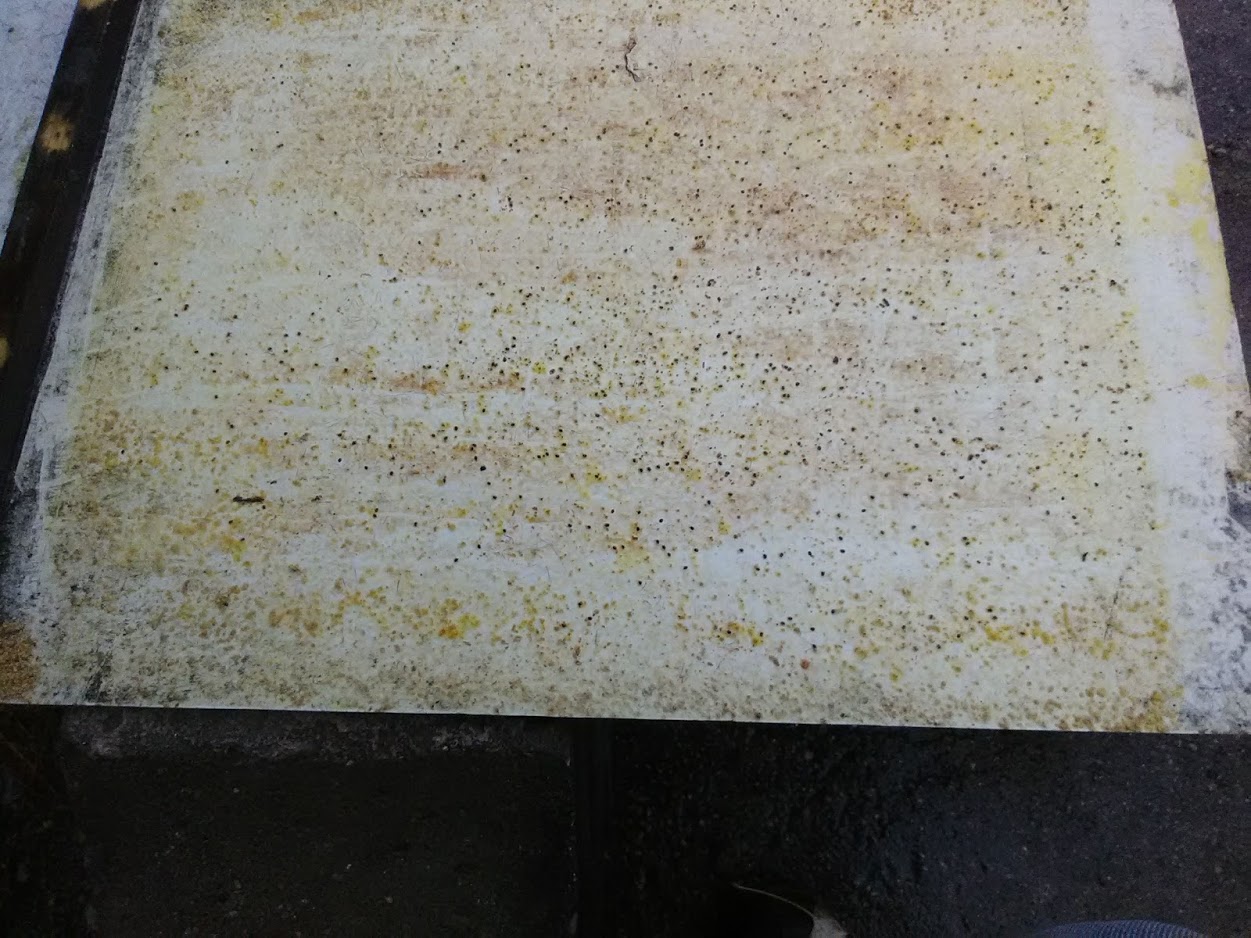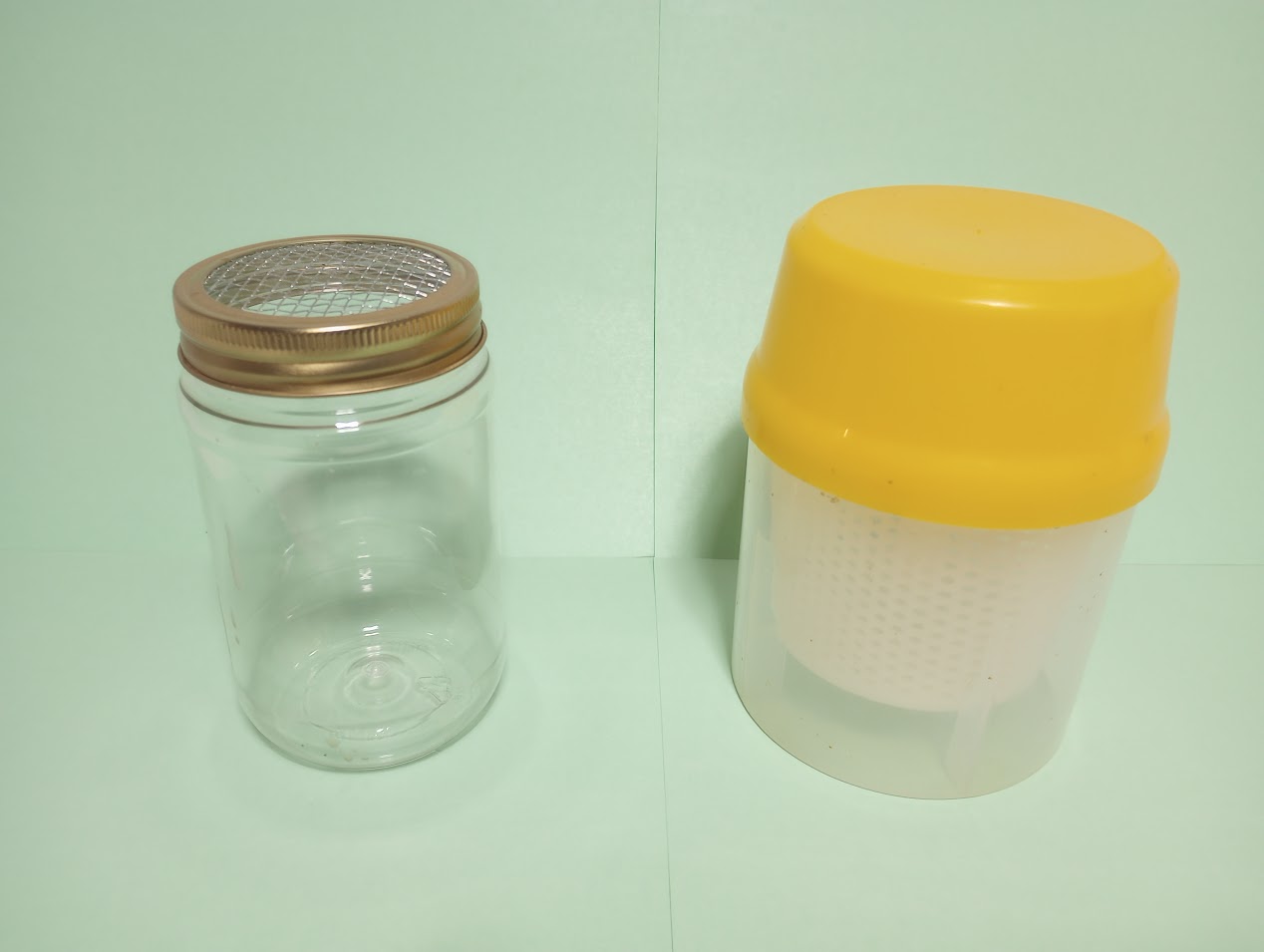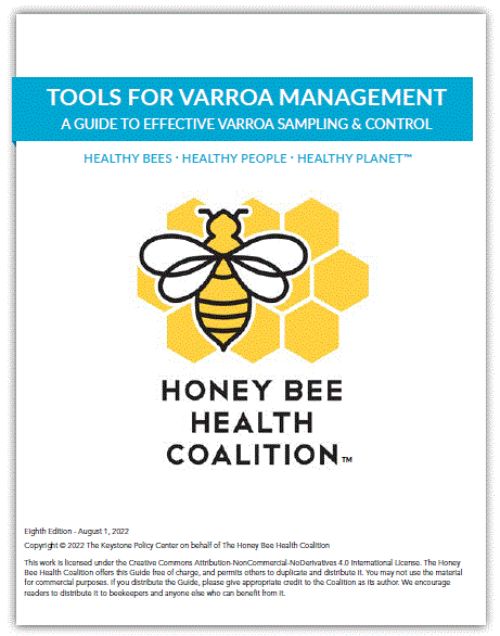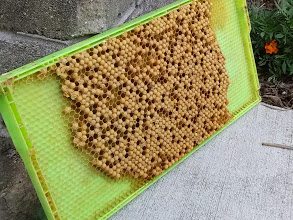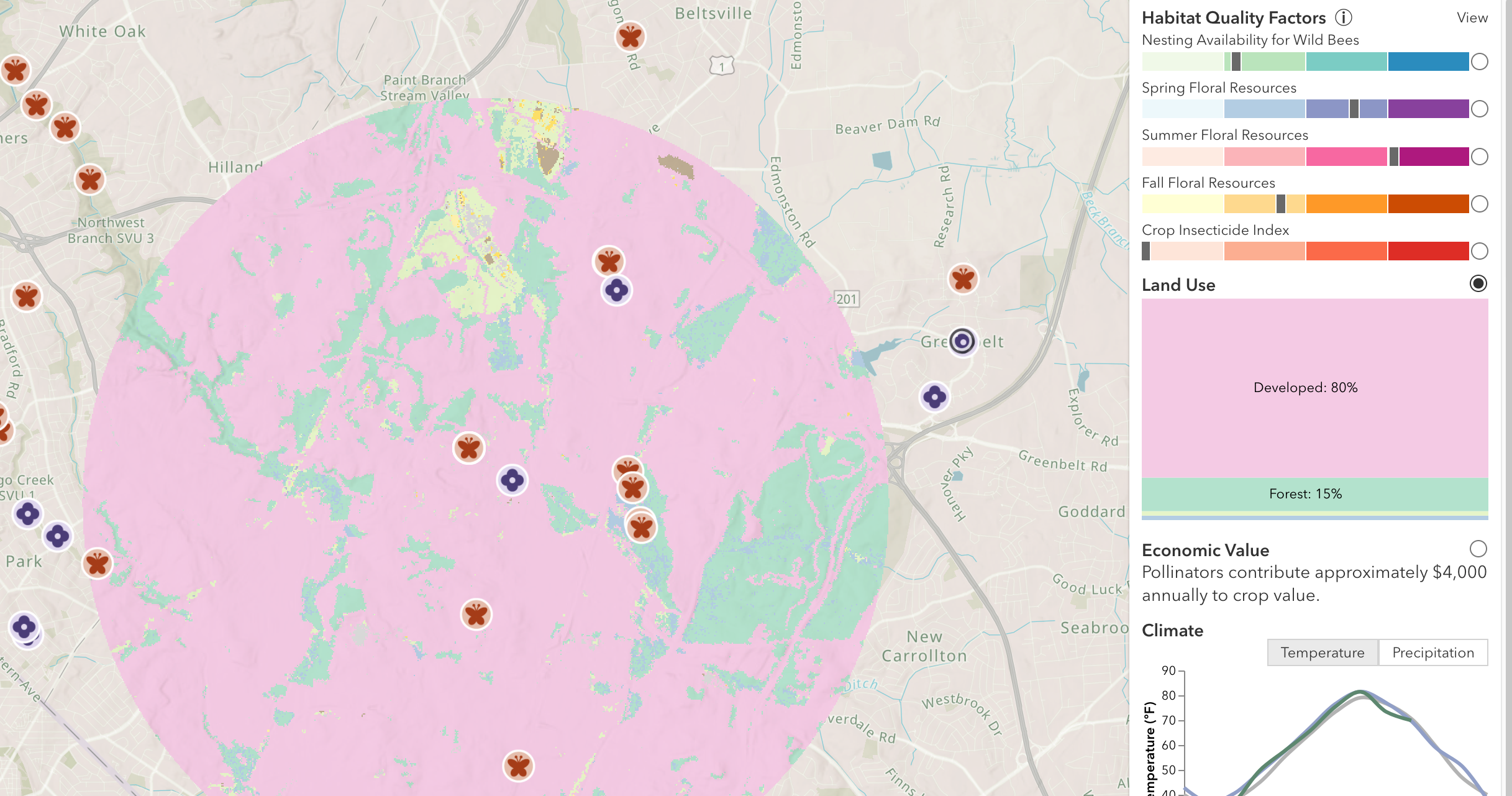Click Here if you listened. We’d love to know what you think. There is even a spot for feedback!
Read along below!
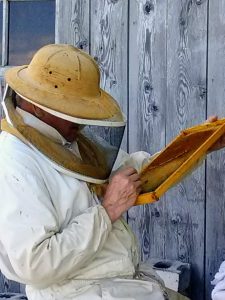
Richard Wahl began learning beekeeping the hard way starting in 2010 with no mentor or club association and a swarm catch. He is now a self-sustainable hobby beekeeper since 2018, writing articles, giving lectures and teaching beginning honey bee husbandry and hive management.
Off the Wahl Beekeeping
New(ish) Beekeeper Column
Communications Within the Colony
By: Richard Wahl
A Bit of History
As the late Summer months fade into Fall we need to make sure our Varroa mite loads are as much under control as possible at this time of year. Just as the bee populations are beginning to decline in preparation for Winter, the mite populations are often exploding. Up until around 1987 beekeepers in the U.S. did not worry about mites. That is the first time they were spotted in the states and it did not take long for them to spread across the entire country, decimating many of the feral colonies along the way. Much the same as Australia did not have to contend with the mite issue until first spotted in 2022, stateside beekeepers did not pay much attention to European control methods until mites became a problem in the U.S. Since northern Europe had been dealing with the mite problem since the late 1960s/early 1970s we in the States followed many of their strategies to control mites. Varroa mites were originally found in Southeast Asia on the apis cerana or eastern honey bee sub-species, which had developed a co-evolved resistance to them. Somehow mites jumped to the European Western honey bee sub-species, apis mellifera, which lacked those same defenses. Researchers and beekeepers have been working for years to develop a strain of apis mellifera bees that have that same resistance or tolerance to mites as the apis cerana bees, but have only had limited success. It is therefore imperative for beekeepers to monitor, test and treat for mites when levels exceed threshold amounts or risk the loss of their bees. Although Varroa mites are external parasites, they weaken the honey bees by feeding on the bee’s and larvae body fat. As the mite feeds it passes a variety of harmful viruses directly to the bee body including the Deformed Wing Virus (DWV) and Acute Bee Paralysis Virus (ABPV). These direct infections bypass the bees’ normal defenses and allow viruses to spread quickly within a colony. The presence of mites also suppresses the bees’ immune systems, making them more susceptible to infections. As a result heavily infected hives often collapse, particularly in late Winter or early Spring, if the mite loads were too great going into the Fall months.
Understanding the Mite Life Cycle
When adult female Varroa mites ride on worker or drone bees in the hive they are in what is called the phoretic stage. This is when they are being transported on the adult bee, with the mite feeding off the bee body fat and moving from one bee to another, normally within the hive. During this time the mite is searching for a brood cell about to be capped in order to reproduce. Mites are unable to reproduce outside of a capped cell and can only survive for a few days if outside the hive and unattached to a bee host. Once the female mite finds a cell to be capped, within the next six to twenty hours it will crawl into and hide in the soon to be capped cell to remain undetected until that cell is capped. Once the cell is capped the mite begins to lay eggs. The first egg laid is usually an unfertilized male and occurs from two to three days after capping. The eggs that follow are laid at a bit more than one day intervals and are fertilized female eggs. This is very similar to the queen bee laying fertilized eggs that become female workers while unfertilized eggs become drones. The young mite progeny go through several molts while living off the bee pupa body fat. The male mite is the first to mature in about five days, and then mates with his sister mites before they emerge with the mature worker or drone bee. At some point the male mite dies while the original female and one or two of her daughters emerge with the adult bee. The female mites then search out new bees to ride on and new cells about to be capped to continue the cycle. It is believed the mites can sense the pheromone signature of drone cells and are drawn to those cells to reproduce as they provide two to three days more in the capped stage. This longer time frame allows for an additional mite or two to develop prior to emergence. Therefore a female mite can produce one to three female offspring in a reproductive cycle. The female mite can live up to two months in the Summer and as much as four to six months in the Winter continuing the reproductive cycle during these times if new brood cells are about to be capped. Naturally, mite production peaks when brood cells are most abundant during the Summer months. The Summer months are when most drifting between hives occurs. If a bee is bringing nectar, pollen or water back to a hive, it will likely be allowed entry, even if not at its own hive. In this manner, if a neighboring beekeeper is not adequately managing their mite counts, drifting bees from a neighboring apiary can result in increased mite loads as they carry a mite or two with them.
Testing for Mites
One of the critical elements of integrated pest management (IPM) is testing for mites. Only with early detection can beekeepers make informed decisions about individual hive health and if treatments are necessary. There are three commonly used methods to test for mite levels. These three include the use of a screened bottom board, the powdered sugar roll and the alcohol wash methods, each with various limitations and strengths. The screened bottom board method involves the use of a screen in place of the solid bottom board where mites that are dislodged from bees fall through the screen to a sticky tray below. After scraping screened bottom boards clean with a paint scraper it can be sprayed with a quality nonstick cooking pan release spray. I find olive oil based sprays work best. Counting the accumulated mites after one to three days and calculating the average mite drop can provide a clue whether mite treatment is needed. Divide the mite count drop by the number of days the cleaned tray was left in the hive to get the average twenty-four hour mite drop. If that average is ten or more mites per day it is recommended by most beekeepers that a treatment is needed. This method is considered to be the most passive in that the hive does not need to be disturbed for monitoring while the screened bottom board can be left in place for continuous observations. The longer the board is left in place the harder it is to get an accurate count since there will be additional hive debris falling through the screen. This is considered to be the least accurate of the testing methods. Mite drops are dependent on how many mites get knocked off bees as the hygienics of the colony can vary greatly. However, the use of screened bottom boards is a good way to check mite treatment results. If a significant drop occurs within a day or two after treatment it can be assumed the treatment had some degree of effectiveness. A more accurate method of mite testing is the powdered sugar roll.
When using the powdered sugar roll method, 300 bees need to be collected. These bees should be ones that are populating a brood frame since that is where the mites will hang out in order to sneak into a soon to be capped larva cell. Beekeepers have determined that a half cup contains around 300 bees. To collect the half cup, a brood frame can be gently shaken into a tub or container and the half cup scooped out or a container can be slowly dragged across the backs of bees on a brood frame. As the container is dragged downward bees will release and fall into the container from which a half cup can be put into the testing receptacle. Add two tablespoons of powdered sugar to the receptacle and roll or shake the bees in the powdered sugar for about two minutes until all bees get thoroughly covered. The sugar will dislodge most of the mites. After replacing any solid receptacle cover with a screened mesh cover shake the powdered sugar and dislodged mites into a white bowl or dish with a bit of water. The dark tan mites can be counted as the white powdered sugar dissolves. Divide the mite count by three to get the percentage of mites present in the sample. Treatment is considered to be needed if mite counts are 1% or more than 3-4 in the Spring, 2% or more than 6-9 in the Summer and 3% or more than 9-12 in the Fall. This method is considered to be gentler on the bees which can be returned to the hive where they will clean themselves of the powdered sugar. The mite’s ability to hang onto bees, the humidity conditions and the beekeeper rolling technique all play into the accuracy of this method. Some beekeepers consider the shaking or rolling in the powdered sugar to be nearly as damaging to the bees as the alcohol wash method which follows.
The third and most accurate method of testing is the alcohol wash method. It has been found that Winter windshield washer fluid works equally as well as 70% isopropyl alcohol. First collect 300 bees (½ cup) as stated in the powdered sugar roll method above. Add the bees and ½ cup of washer fluid or alcohol to a clear container and shake well for a full minute to dislodge the mites. The mites will sink to the bottom of the container while the bees tend to float to the top. The mites at the bottom of the container can then be counted. Treatment recommendations remain the same as for the powdered sugar roll percentages previously noted. This method yields highly accurate mite counts, but it of course kills the bees in the sample. Consider that 300 bees are sacrificed to preserve the remaining multiple tens of thousands of bees still in the colony. Although I have reached a point where I feel the need to treat only those hives where mite counts exceed recommended thresholds, many beekeepers with a greater number of colonies, particularly those with large commercial operations, do selective sampling and treat all colonies if any in the apiary deem the need. The method of testing chosen will depend on each beekeeper’s goals, colony conditions and management philosophies.
Treatments for Mites
It is a natural tendency for beekeepers to want to minimize any chemical based treatments for their bees. With the profusion of varroa mites across nearly all apis mellifera beekeeping populations it is nearly impossible to practice purely non-chemical methods and expect bee colonies to survive. Although there are non-chemical methods in IPM, they seldom work in isolation. Techniques like drone brood removal on green drone frames, sole use of screened bottom boards or brood interruption (that is queen caging or splits) can augment IPM mite control, but never completely replace the occasional use of chemical treatments. The variety of chemical choices varies greatly with some that can be used with honey supers on while others require application when no honey is exposed to treatments that will be used for human consumption. The span of choices is too great to cover in depth in this article. A superior reference that can be found online or in printed form is the thirty-two page booklet titled “Tools for Varroa Management” published by the Honey Bee Health Coalition, August 1, 2022 edition.
It can be found online under the same title or publisher. It is my understanding that a new edition is being prepared this year. As well as with or without honey supers on, there are seasonal treatment choices based on heat sensitivity or temperature requirements. A recent addition to the lineup of treatments is a product called VarroxSan approved by the EPA. It is a slow release oxalic acid based treatment that follows the research done by Randy Oliver who pioneered the oxalic crystals dissolved in glycerin and then absorbed by small dishtowels (Swedish sponges) which were then dehydrated before application. Since my college BS degree includes a minor in chemistry, I was more comfortable trying his detailed recipe than most would be. As soon as Randy’s research indicated it had very good efficacy, I replaced my previous oxalic dribble with this method and was very pleased with the results. A full description of the similar VarroxSan treatment method approved by the EPA, and how one beekeeping company has used it, can be found on the Foxhound Bee Co website at: “VarroxSan – A Cardboard Oxalic Acid Strip”. Randy Oliver’s research can be found at the website: Scientific Beekeeping.com. Application is much the same as using the HopGuard3 treatment where oxalic/glycerin impregnated cardboard strips are hung over brood frames. I am in no way affiliated with the Foxhound Bee Company or Randy Oliver, but have found these agencies to be very reliable sources for beekeeping information, research and results.
My Treatment Regimen
I have to admit I was not as diligent about mite monitoring as I should have been in my first few years of beekeeping and lost hives as a result. I have done much better at testing and treating in the past few years and as a result have come through two seasons in the last three years with 100% overwintering success. My treatment regimen starts with a brood break. I move overwintered queens into split off nucleus colonies (nucs), which I sell, leaving the original hives to raise new queens. The resultant hive brood break causes most overwintered mites to die off since for a month or so they have no new capped brood to reproduce in. When accomplishing splits I place a green drone frame next to any brood frame remaining in the hive. The mites are drawn to the longer capped drone frame gestation time and the frame is pulled before drones emerge. With the aforementioned steps accomplished I test and treat if necessary with Formic Pro in the late June, early July timeframe. At that time I have found mite counts to be at zero or one negating the need for treatment. I test and treat again if necessary in the late August timeframe. I find that at this time about half of my hives reach a 2% threshold mite count at which time I again use Formic Pro. Up until about three years ago I would then do one or two Oxalic acid dribbles in late October and again between the Thanksgiving and Christmas holidays if the 3% threshold has been reached. For the past three years I have instead used Randy Oliver’s dehydrated glycerin/oxalic mix method with the pads left in the hives over Winter. This seems to have provided my greater overwintered success rate as noted earlier. Beekeepers can now use the EPA approved VarroxSan treatment sold as advertised in the major bee equipment catalogues which incorporates the previously mentioned slow release glycerin/oxalic combination. In any event mite treatment philosopy is one case where the old adage among beekeepers does not seem to apply: “Ask ten beekeepers how they do things with bees and you get twelve different answers.” In the case of mites I think 98% to 99% of beekeepers will tell you that if you do not monitor, test and treat for mites when required, you will lose your hives!







